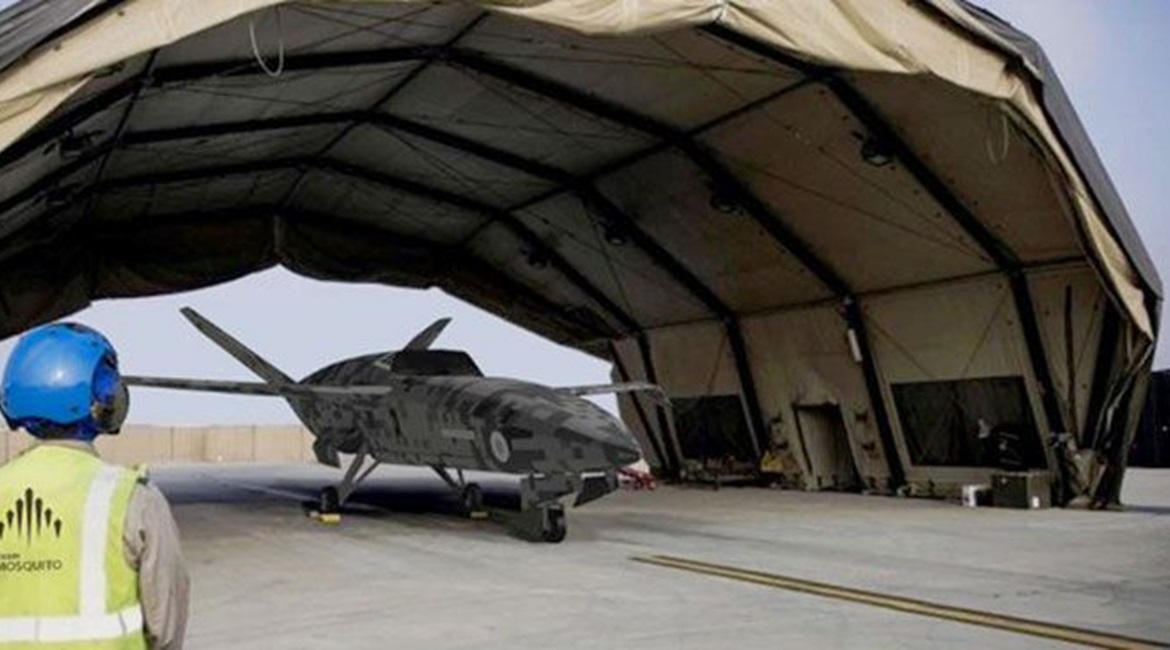
Spirit AeroSystems has named its team to take forward the United Kingdom’s Mosquito ‘loyal wingman’ attritable unmanned aerial vehicle (UAV) concept.

An artist’s impression of the Mosquito loyal wingman in operational service. (Spirit AeroSystems)
The Wichita-based company announced on 27 April that the team to develop the Mosquito under the UK’s Lightweight Affordable Novel Combat Aircraft (LANCA) programme will include Northern Ireland-based Spirit Belfast, as well as Northrop Grumman and Intrepid Minds.
“Exploiting agile design principles, sophisticated digital applications, and advanced manufacturing skills, the team will generate knowledge and evidence for a potential follow-on project. Findings could lead to this revolutionary capability being deployed by the RAF [Royal Air Force] to enhance protection, survivability, and information advantage to aircrews,” Spirit AeroSystems said.
Confirmation of the teaming arrangement comes four months after the UK Ministry of Defence (MoD) contracted Spirit AeroSystems to lead the design and manufacture of a prototype loyal wingman for the RAF. The GBP30 million (USD41 million) award announced by the MoD on 25 January to design and manufacture a prototype “capable of providing a battle-winning advantage to the RAF”, the service said at the time.
“Drawing on its expertise in advanced composite manufacturing solutions, Spirit Belfast will adapt its […] resin transfer infusion technology to produce a lightweight vehicle capable of uncrewed, high-speed flight. Benefits of using extensive composite components, compared to all-aluminium aerostructures, include both reduced maintenance and fuel consumption for aircraft operations,” Spirit AeroSystems said.
Northrop Grumman will provide systems engineering support, as well as its international Distributed Autonomy / Responsive Control (DA/RC) technologies, gateway offerings, and advanced mesh networking capabilities to the aircraft, with Spirit AeroSystems noting, “These enable seamless human-machine collaboration and co-operative mission management across distributed manned and unmanned assets.”
Looking to read the full article?
Gain unlimited access to Janes news and more...




